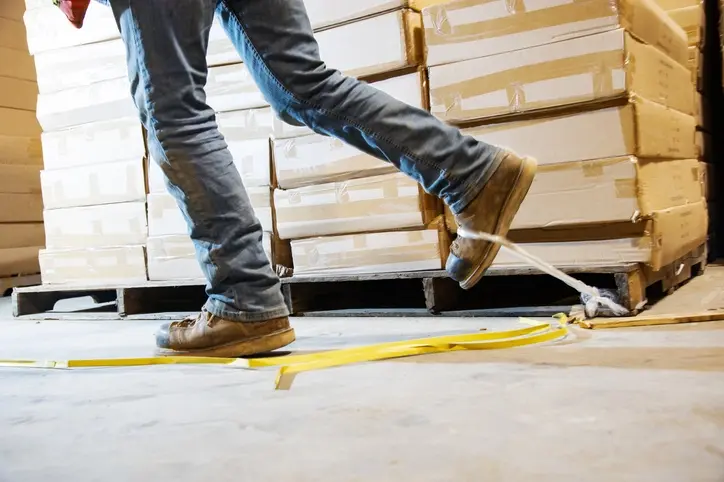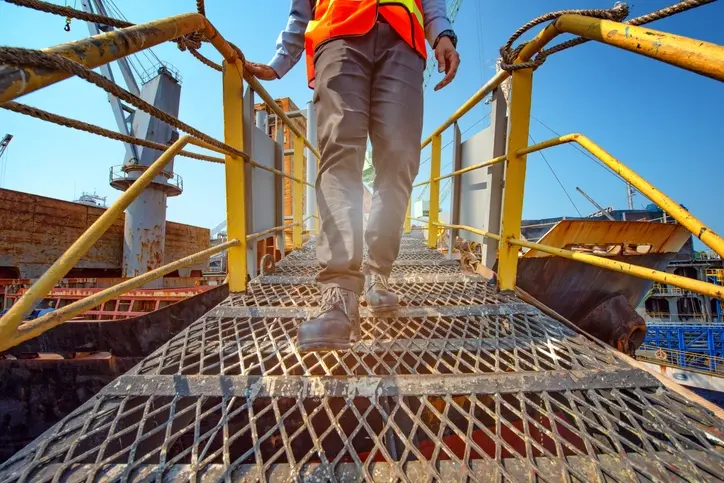You may only sue your employer for unsafe working conditions if they intentionally placed you in a hazardous work environment. They had to be aware of the hazardous conditions and refused to change them anyway. You also had to suffer injuries or death as a result of their decision to force you to work.
If they unintentionally caused your injuries due to unsafe working conditions, you may not have a personal injury claim. However, you may qualify for workers’ compensation if you notify your employer and file a report to OSHA.
Don’t worry about retaliation, since you can file the complaint anonymously and it’s protected by workers’ compensation laws. Your attorney can help arrange the evidence together to maximize your claim.
Seek immediate medical help if you were injured during work and record any documentation, pictures, and other necessary proof to show you’ve been injured at work.
Free Workers' Compensation Evaluation
Have medical bills from a work injury? Click here to speak with a nearby attorney for FREE about your claim.
What are Unsafe Working Conditions?
Unsafe working conditions are dangerous environments where employees cannot perform tasks without risking bodily injury or illness. These hazardous work conditions can cause physical and respiratory injuries caused by:
- Malfunctioning machinery
- Lacking safety gear
- Improper workstations
- Poor training, etc.
Employers are obligated under the OSH Act of 1970 to provide a reasonably safe place of work for employees. This includes providing necessary personal protective equipment (PPE) to workers and preventing hazardous conditions from forming in the workplace.
If your work imposes unsafe working conditions, you have the right to contact OSHA and file a complaint to change the situation. You may possibly collect workers’ compensation benefits if you were injured while working. Find a workers comp or a personal injury attorney to ensure you get compensation for your losses.
Examples of Unsafe Working Conditions
Common examples of unsafe working conditions are,
- Lacking personal protective equipment
- Poorly managed work areas and supervision
- Workstations not properly regulated
- Violating state and federal safety guidelines
- Ignores safety signs/symbols
- Damaged or poor non-updated machinery
- Damaged unrepaired equipment
- Physical and chemical hazards (loud noise, poisonous gas, etc.)
- A disorganized work environment that poses trips and falls
- Poor training or unqualified employees
- Excessive workload placed on one person
- Electrical or fire hazards
- Blocked fire escapes and emergency exits
- Threats of other workers and animals
Employers must follow all safety rules to protect workers from unsafe working conditions. OSHA has standards for keeping a work environment safe for all workers. If employers fail to abide by the regulated safety standards, impacted employees may file a lawsuit.
How to Identify Unsafe Working Conditions
The Occupational Safety and Health Administration (OSHA) regulates most private industries or OSHA-approved state plans. OSHA also inspects private industries and enforces rules to protect injured employees hurt due to unsafe working conditions.
According to the U.S. Bureau of Labor Statistics, over 2.8 million workers were injured with nonfatal injuries or illnesses in 2022. And about 5,486 workers were fatally harmed with 3.7 fatalities per 100,000 full-time equivalent workers.
The industry sector leads on the largest number of preventable fatal injuries, followed by transportation and warehousing. Employers and employees need to identify unsafe working conditions to prevent the number of injuries and illnesses occurring each year.
OSHA Standards for Working Conditions
OSHA standards for protecting employees are separated into four groups:
- General industry
- Construction
- Maritime
- Agriculture
These standards ensure employers provide their employees with a workplace free from serious hazards. The main factor deciding whether you can sue your employer for unsafe working conditions depends on whether they follow OSHA standards.
General Industry

This group of OSHA standards focuses on manufacturing, warehousing, retail, office work, and health care. This sector is the largest among the rest, but also sees the most industrial accidents.
- Provide appropriate PPE like goggles, face shields, ear plugs, and training.
- Clean and non-cluttered work areas to avoid slips and fall injuries.
- Provide safety exits in case of emergencies, and provide accessible portable fire extinguishers.
- Employers must undergo necessary maintenance, inspections, and tests of machinery or other related assets.
- Inspect walking surfaces to ensure cleanliness before employees can access those grounds.
Construction

The main focus of these standards is to enforce employers to give accident protection programs that provide frequent and regular inspections of workstations, materials, and equipment under 29 CFR 1926.20(b).
- Provide adequate training and experience to operate equipment and machinery.
- Free access to first-aid services, and provide medical provisions for all employees.
- Require proper equipment gear and protective wear in all hazardous work.
- Protective fall and safety nets or harnesses for working at a height of 6 feet or more.
- Keep operative equipment or machinery up to date from recognized hazards that can cause injuries or death.
- Ensure pressure vessels and boilers have valid certifications from an insurance company or regulatory authority as proof of safe installation, inspection, and testing.
Maritime

These are official federal regulations that ensure the safety of those who work and travel on the sea.
- Ensure atmospheric testing for oxygen content, flammability, and toxicity.
- The oxygen scope of all rooms should range from 19.5% to 22%.
- Inspect spaces that are sealed, contain flammable or hazardous chemicals, fumigated, or lack oxygen.
- Proper training and safety gear for employees, so those entering confined spaces can safely exit and evacuate during emergencies.
- Establish a highly experienced third-party rescue team to help during dangerous situations.
- Stop work if change made in a vessel could alter conditions in a confined space leading to possible hazards, and demand immediate inspection.
Agriculture

The following regulations ensure safety for farm workers exposed to machinery/ vehicles, loud noise, chemicals, musculoskeletal injuries, and excessive heat. You may qualify for a legal claim if you were involved in a farming accident and your employer ignored these regulations.
- Ensure tractors have safety belts and are properly maintained.
- Ensure batteries, fuel tanks, oil containers, and coolants are safely sealed and stored.
- All vehicles must pass standard laboratory and field-upset tests to certify effective use in preventing injuries.
- Employers must provide adequate training in operations and safety practices.
- Provide required breaks with shade and free cool drinking water, especially under extreme weather.
Do You Have to Work Under an Unsafe Working Environment?
You may file a complaint with OSHA if you reported the situation to your employer and nothing changed. OSHA states that if your work environment presents risks of injury or death and OSHA cannot perform an inspection on-time, you have the legal right to refuse the work.
Your right to refuse to work should meet all these conditions below:
- You alerted your employer about unsafe working conditions, but the employer failed to comply.
- You refused to work in good faith, meaning you genuinely felt an imminent danger was present.
- For a reasonable person, there was a serious threat or risk of death or injury.
- There’s not enough time to correct the situation through regular means like requesting an OSHA’s inspection.
Contact OSHA immediately if you believe there’s a severe danger in performing at your workplace and bring it up to your employer.
How to File a Complaint For Unsafe Working Conditions
If you believe your job has a hazardous work environment, file a complaint for unsafe working conditions through OSHA.
Reporting to Your Employer
Before filing a complaint to OSHA, you should always bring any hazard attention to your employer. Speak with them about the unsafe environment you are working in and have them take care of it. The worst-case scenario is they choose not to resolve the issue and you may file a complaint with OSHA.
Filing a Complaint with OSHA
File a complaint with OSHA for unsafe working conditions through either of these methods:
- Online through their website
- Fax, mail, or email by completing OSHA’s complaint form
- Telephone through your local OSHA office, or 800-321-6742
- In-person by visiting your local OSHA office
Preserve Evidence for an Inspection
Preserve evidence for an inspection so OSHA is aware of these hazards. Take pictures and videos, or acquire proof that helps with the inspection. Provide injury or sickness logs, training records, documents, or written safety plans. The more evidence you can find, the higher the chance of a larger settlement award.
Resist Unsafe Working Conditions and Find an Attorney!
Find a worker’s compensation attorney to prevent further unsafe working conditions for yourself and your fellow workers. LegalASAP has a network of 500+ law firms and can connect with thousands of experienced attorneys across the United States.
Understand your workers’ rights within your state by filling out our free short consultation form, and we’ll try to help you with your claim. For questions or concerns that cannot wait, you may call us at 888-927-3080.
Cassandra Nguy
Cassandra Tran Nguy is a legal writer living in Los Angeles, California. She graduated cum laude from California State University, Northridge with a B.A. in English Creative Writing and a minor in Marketing. Visit her online profile at linkedin.com

